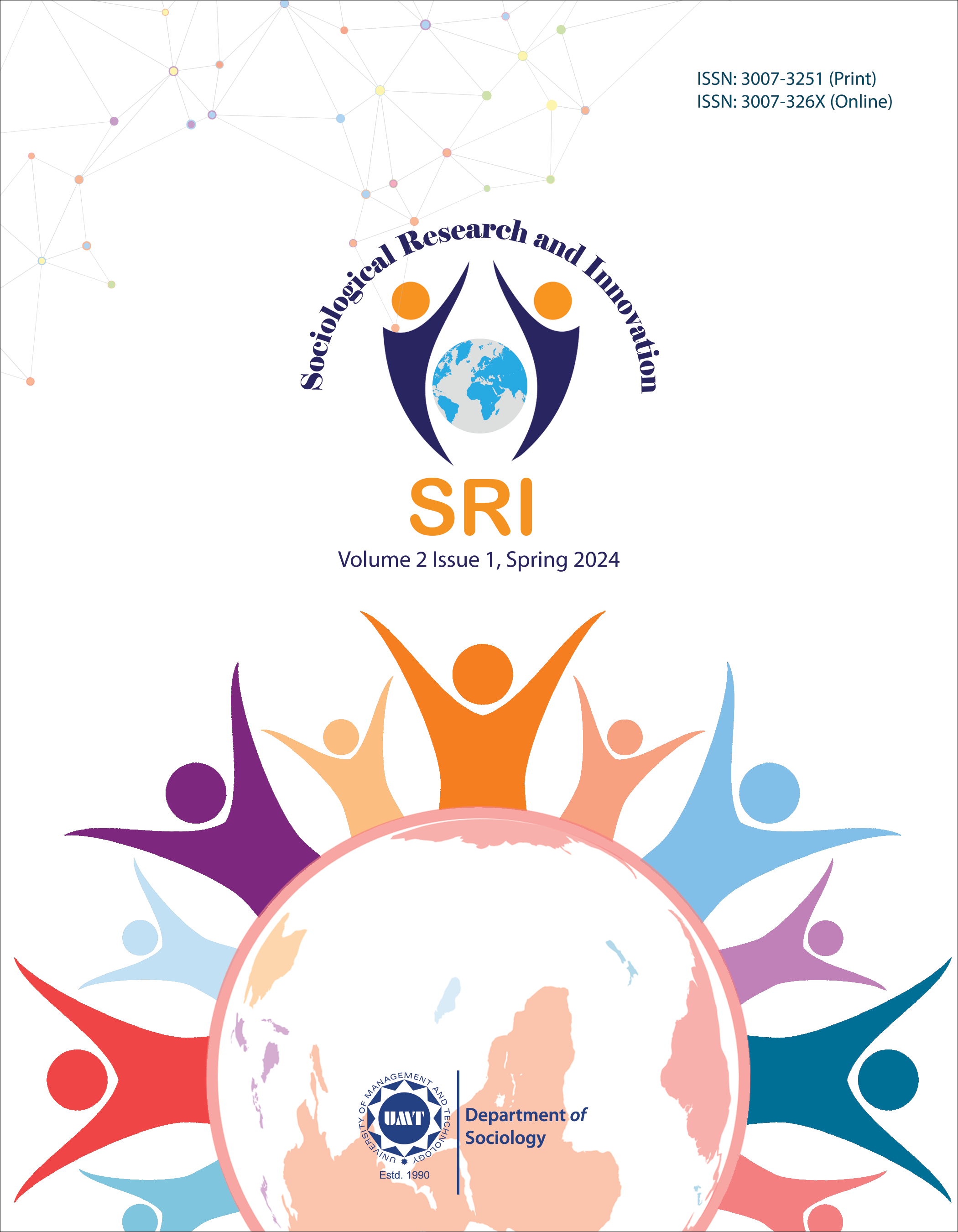Perceptions of Undergraduate Students with Hearing Impairments (HI) Pertaining to their Job Placement
Abstract
 Abstract Views: 0
Abstract Views: 0
This research aims to investigate the perceptions of undergraduate students with hearing impairments regarding their job placement. The study is descriptive in nature and conducted through questionnaires. The main objective of this study is to compare the problems that male and female undergraduate students with impaired hearing face regarding their job placement. For this purpose, data was collected from 78 students of private and public sector universities in Lahore through convenient sampling. The variables related to students’ perceptions were mainly demanded, job readiness, employment, and barriers. The collected data is then tabulated and analyzed through SPSS. The findings revealed that the pupils with Hearing Impairments (HI) faced difficulties in getting a job, as they considered their impairments to be a great barrier
Downloads
References
Abbas, F., Anis, F., & Ayaz, M. (2019). Employment barriers for persons with hearing impairment in the job market: Employers’ perspectives. Global Social Sciences Review, 4(3), 421–432.
Bashir, R. (2005, October 18–19). Students with hearing impairment in inclusive classrooms [Paper presentation]. Proceedings of the 2nd International Conference on Inclusive Education: Innovations in Inclusive School Development. Hong Kong, China.
Bleak, K. W., & Abernathy, T. (2022). Individuals with disabilities education act (IDEA). Routledge. https://doi.org/10.4324/9780367198459-REPRW196-1
Davies, J., Heasman, B., Livesey, A., Walker, A., Pellicano, E., & Remington, A. (2023). Access to employment: A comparison of autistic, neurodivergent and neurotypical adults’ experiences of hiring processes in the United Kingdom. Autism, 27(6), 1746–1763. https://doi.org/10.1177/13623613221145377
Dong, S., Meros, T., & Seenath, S. (2023). Workplace accommodation requests: Experiences of barriers and facilitators among deaf and hard-of-hearing. Work, 76(4), 1565–1578. https://doi.org/10.3233/WOR-220632
Duarte, I., Santos, C. C., Rego, G., & Nunes, R. (2016). School failure in students who are normal-hearing or deaf: With or without cochlear implants. Springer Plus, 5, 1–8. https://doi.org/10.1186/s40064-016-1927-9
Felman, A. (2023, April 11). What's to know about deafness and hearing loss? Medical News Today. https://www.medicalnewstoday.com/articles/249285.php
Glover, N. (2014, May 23). What is competency management? Benefits and best practices. Quantanite. https://www.quantanite.com/blog/what-is-competency-management-benefits-and-best-practices/
Government of Pakistan. (2002). National policy for persons with disabilities. https://dgse.gov.pk/SiteImage/Downloads/National%20Policy%20for%20Persons%20with%20Disability.pdf
Halai, A. (2006). Ethics in qualitative research: Issues and challenges (EdQual Working Paper No. 4). The Aga Khan University, Pakistan. https://www.edqual.org/publications/workingpaper/edqualwp4.pdf/at_download/file.pdf
Lee, D., Ramírez, M., Castruita-Rios, Y., Chen, X., & Tansey, T. (2023). Effective secondary services in transition-age youth with disabilities: A systematic review of the literature. Rehabilitation Research, Policy & Education, 37(1), 80–92. http://dx.doi.org/10.1891/RE-22-12
Malik, A. B., Amin, N., Ahmad K., Mukhtar, E. M., Saleem, M., & Kakli, M. B. (2014). Pakistan Education for All: Review Report, 2015. UNESCO. https://unesdoc.unesco.org/ark:/48223/pf0000229718
Martin, B. C., & Honig, B. (2020). Inclusive management research: Persons with disabilities and self-employment activity as an exemplar. Journal of Business Ethics, 166(3), 553–575. https://doi.org/10.1007/s10551-019-04122-x
McArdle, N., & Acevedo-Garcia, D. (2022). Consequences of segregation for children's opportunity and wellbeing: Joint center for housing studies, 2017. In E. Mueller & J. R. Tighe (Eds.), The affordable housing reader (pp. 113–122). Routledge.
Porter-Vaughn, L. M. (2022). Perceptions of deaf and hard-of-hearing college students’ work readiness and preparation (Publication No. 29212204) [Doctoral dissertation, University of Arizona Global Campus]. ProQuest Dissertations & Theses
Runde, D. F., Erol, Y. K., & Sundar, R. R. (2019). The new missing middle in development finance. Center for Strategic and International Studies. https://www.jstor.org/stable/resrep53705
Santuzzi, A. M., Martinez, J. J., & Keating, R. T. (2022). The benefits of inclusion for disability measurement in the workplace. Equality, Diversity and Inclusion: An International Journal, 41(3), 474–490. https://doi.org/10.1108/EDI-06-2020-0167
Sinclair, C. (2020). Developing and revising the Canadian code of ethics for psychologists: Key differences from the American psychological association code. Ethics & Behavior, 30(4), 249–263. https://doi.org/10.1080/10508422.2019.1711094
Tucci, D. L. (2023). NIDCD’s 5-year strategic plan describes scientific priorities and commitment to diversity, equity, inclusion, and accessibility. Ear and Hearing, 44(3), 437–439. https://doi.org/10.1097/AUD.0000000000001363
United Nations Children's Fund. (2023). Global annual results report 2022: Gender equality. https://www.unicef.org/reports/global-annual-results-report-2022-gender-equality
United Nations Educational, Scientific and Cultural Organization. (2020, June 23). Global education monitoring report 2020: Inclusion and education. https://www.unesco.org/gem-report/en/inclusion
United Nations Children’s Fund. (2023). Global annual results report 2022: Gender equality. https://www.unicef.org/reports/global-annual-results-report-2022-gender-equality
United Nations Children's Fund. (2019). Education: Giving every child the right to education. https://www.unicef.org/pakistan/education
United Nations Human Settlements Programme. (2020). The new urban agenda illustrated handbook. https://unhabitat.org/the-new-urban-agenda-illustrated
United Nations. (2015). Transforming our world: The 2030 Agenda for Sustainable Development. https://sustainabledevelopment.un.org/post2015/transformingourworld
United Nations. (n.d.). History of United Nations and persons with disabilities – United Nations decade of disabled persons: 1983 – 1992. https://tinyurl.com/2vjefa34
United States Congress. (1975). Education for All Handicapped Children Act of 1975. https://www.govinfo.gov/content/pkg/STATUTE-89/pdf/STATUTE-89-Pg773.pdf
Walter, G. G., & Dirmyer, R. (2013). The effect of education on the occupational status of deaf and hard of hearing 26-to-64-year-olds. American Annals of the Deaf, 158(1), 41–49.
World Health Organization. (2023, September 25). WHO tool for benchmarking ethics oversight of health-related research involving human participants. https://www.who.int/publications/i/item/9789240076426
Yorke, M., & Knight, P. (2004). Employability in higher education: What it is-what it is not. LTSN Generic Centre. https://www.qualityresearchinternational.com/esecttools/esectpubs/Employability%20in%20HE.pdf
Copyright (c) 2024 Tayyaba Shamas

This work is licensed under a Creative Commons Attribution 4.0 International License.


